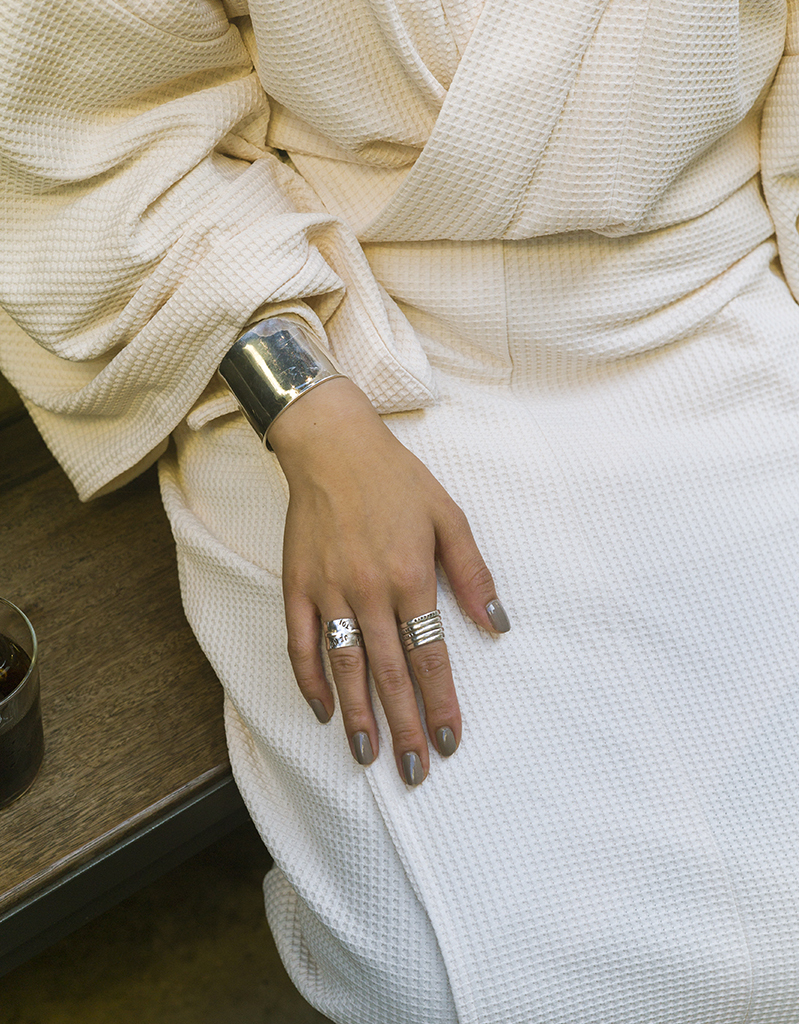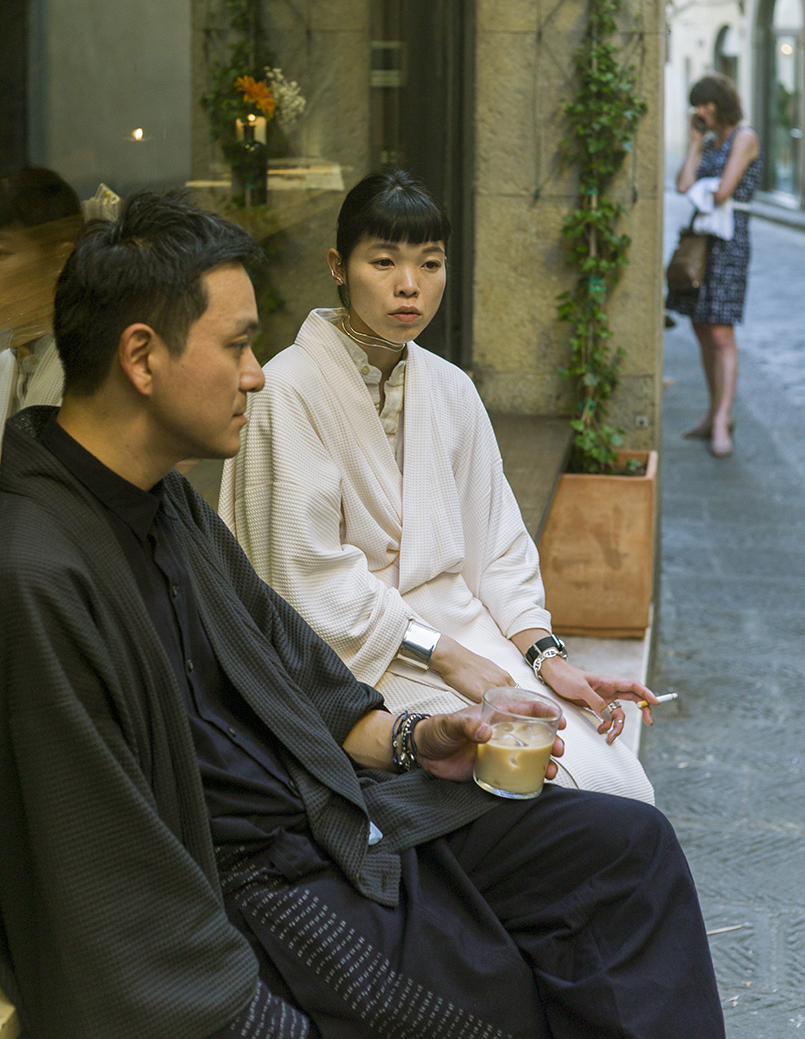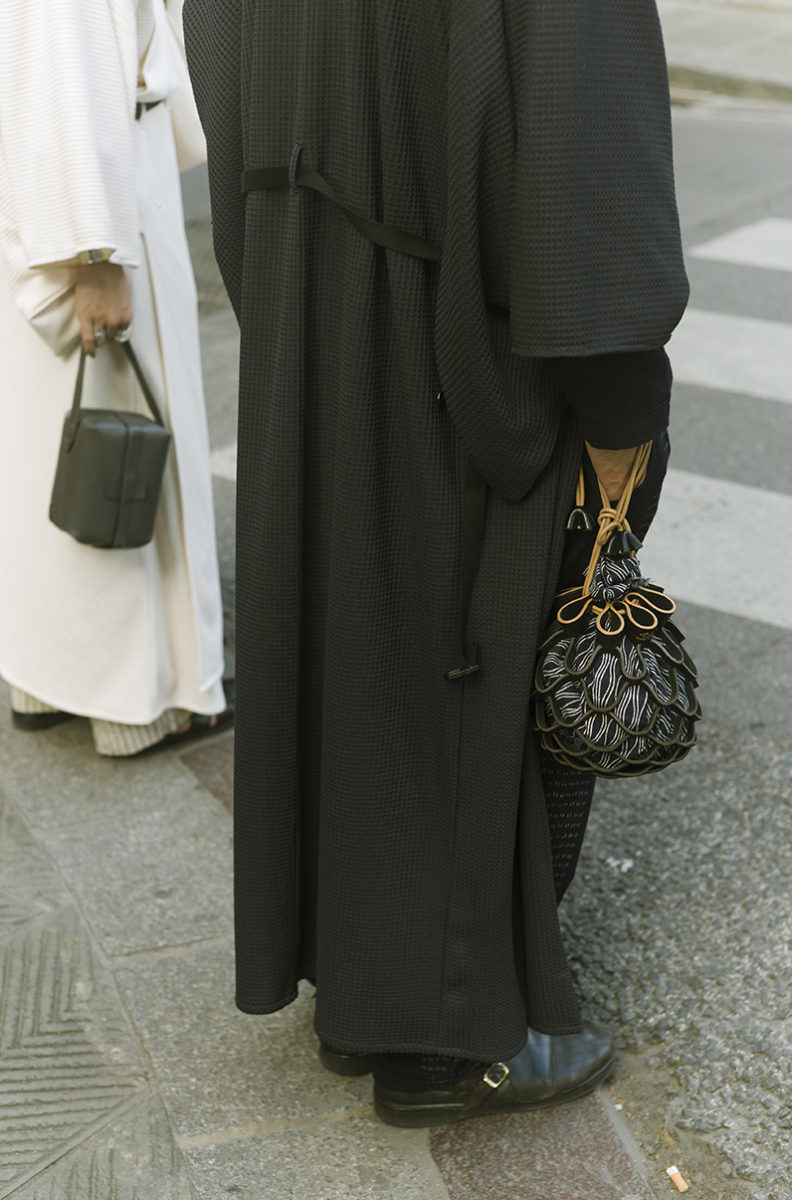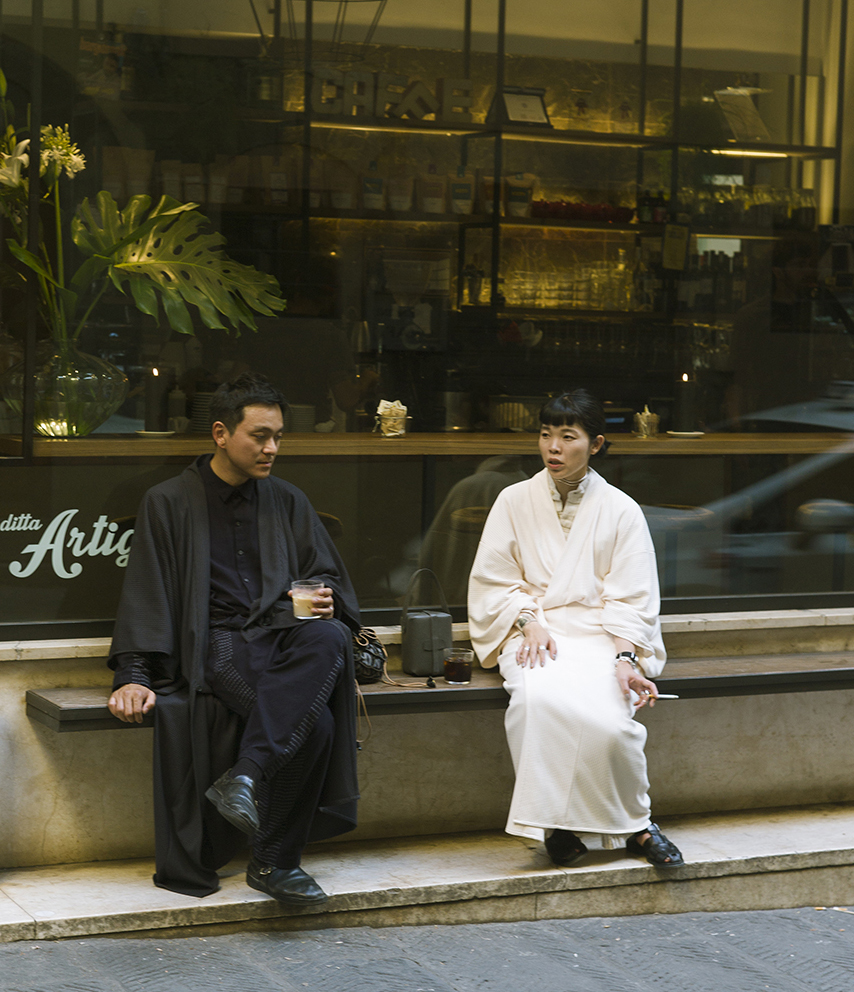A new relation between kimono and the outdoorsKIMONOASOBI【Part 2】
Play outdoors in a kimono. “OUTDOOR KIMONO”
developed out of a desire to
update a uniquely Japanese culture.
FIELDWORK is a site for not only future Snow Peak Apparel staff, but also Snow Peak customers and everyone else involved to do “field work” together. Snow Peak’s mission statement is: “To constantly change, innovate, and change the times.” OUTDOOR KIMONO was born out of a meeting of minds between Snow Peak and Yamato director Takayuki Yajima, who wants “to update culture.” We asked Mr. Yajima and Snow Peak Corporate Officer and General Manager of Planning and Development Lisa Yamai to discuss the meaning of their collaboration.
We won’t make “fashion” designed exclusively for consumption
- Takayuki Yajima
- After releasing OUTDOOR KIMONO, I received a lot of positive comments, but also a lot of criticism. For example, this was from the kimono fabric industry, but I was taken out of context to say, “Obi [kimono belt] is unnecessary.” I certainly don’t disregard obi, and some people understand that I’m doing this because I think we'll all be doomed unless a new gateway to kimono is made.
- Lisa Yamai
- It’s really the same in every industry, isn't it? You said that tradition has to evolve to survive, and our corporate philosophy has a mission statement, which says, “We will constantly change, innovate, and change the times.” It’s not a theory of evolutionary selection, but we are very much doing business in a time of generational alternation and transition.
- Yajima
- I think for our parents’ generation, there was a period when it was relatively easy to sell stuff. When we started working, it was no longer like that. So our conceptualization is very different. Maybe that’s why it’s worthwhile. It’s not just about sales.
- Lisa
- I think it’s the same anywhere in the industry. Whether it’s retailers, EC, they work based on data, and even Amazon lacks buyers. Based on data and AI-developed algorithms, it's said that we can increase sales. Collaborations are also intended apparently to only create instantaneous sales. It takes a long time to do something new. I think that with you, we could take our time and create new value.
- Yajima
- Making new value is important. It’s fun too, isn't it? I think the keyword is “update.” Update culture. We’ve been in business 101 years, but I’m kind of against the “old and established business” idea. They tend to become inert. I often tell my staff that I want to remain innovative and maintain a venturing spirit. My grandfather went to America 13 years after he returned from Taiwan after the war. He studied chain stores. He was probably full of venturing spirit. I think Yamato at that time was a product of venturing spirit. At some point, we caught the “big company disease.” So now, I keep saying, we need to revive the venturing spirit. In terms of branding as well.
- Lisa
- For us too, since we listed our stocks, we have to make sales. In my head, I know it’s not everything, but sometimes I lean towards the sales aspect. For example, I’ve said that we need to make lower-price-range products for the shop-in-shop volume retailer of outdoor goods we’re currently operating. And the President says to me, “What are you talking about! You need to be more edgy!” And yes, I need to stay edgy. We need to be unique and original and edgy. My father often makes me aware of things. That you’re realizing them on your own and acting on them is really amazing.
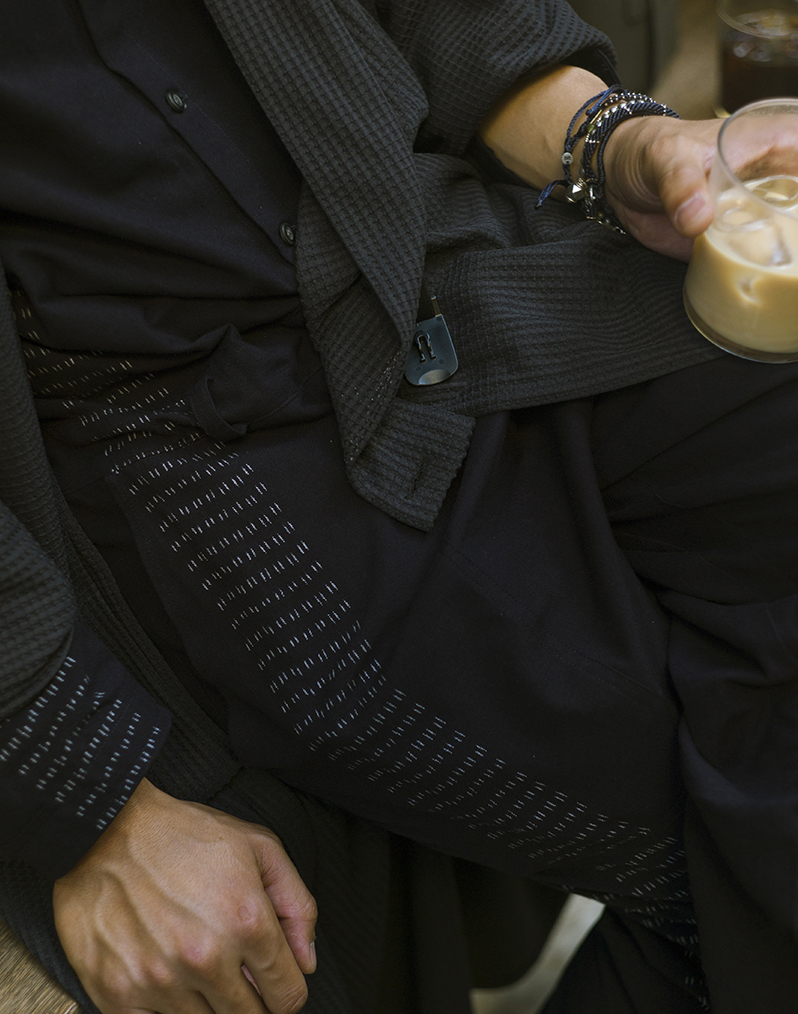
Kimono Yamato is over a 100 years old, but I’m against the old-and-established business model. I value the venturing spirit that’s at the core of our company. (Yajima)

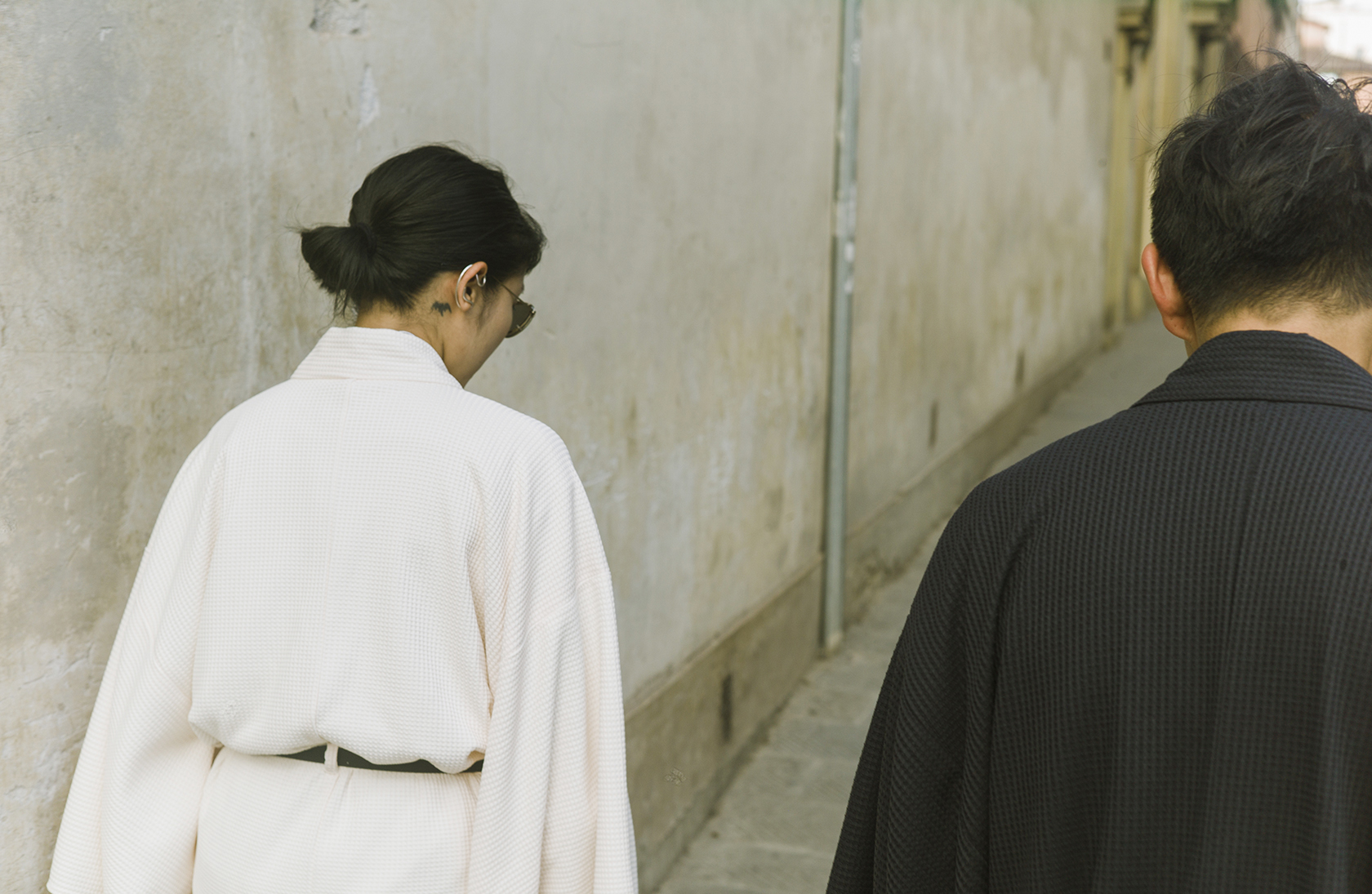
In the outdoor scene,
the tuck and fold is unnecessary.
The OUTDOOR KIMONO functions
without it and can be worn by women as well as men,
so I’d like to propose
that women too can wear kimono
without the tuck and fold.
Functionality and semiotics: Updating the concept of kimono through OUTDOOR KIMONO
- Yajima
- OUTDOOR KIMONO is quite edgy for the kimono industry, so it was very significant for me to have done it. There’s actually another thing I want to try. The beauty of women’s kimono lies in the part that’s folded and tucked under the obi. I would like to deconstruct this idea that the tucked and folded section is necessary. In the outdoor scene, the tuck and fold would be unnecessary. The kimono would function without it. OUTDOOR KIMONO can be worn by women as well as men, so maybe it can help spread the idea that women too can wear kimono without the tuck and fold. I call it the curse of the tuck and fold. It’s very troublesome to create. There’s “functionality” and “semiotics” and the tuck and fold is very much established as a sign. Trying to eliminate that sign is very difficult in the kimono industry. It was great that you were a woman because you looked so good in the OUTDOOR KIMONO that I thought it might remove the curse of the tuck and fold. As a way to approach women, I’d like to promote this idea that they can wear kimono without the tuck and fold.
- Lisa
- On the first day of Pitti, it was so comfortable that I just walked through the show in the OUTDOOR KIMONO all day. The next day, a woman from a Japanese denim brand approached me, saying, “You were the one walking around in the kimono yesterday. You really stood out because you were wearing it like a dress.” I was very happy that it was a Japanese woman who’d noticed, especially using the example of a dress. It made me realize that it’s tailored like menswear but can resemble a dress. Someone from GQ also said, “That’s very smart combining the outdoor kimono with an elegant bag and shoes.” It made me think there’s a potential for the women’s market. One important theme for me in making clothes, and maybe this is especially because I’m Japanese, is that it was the Americans that first accepted Snow Peak Apparel as a Japanese brand. Japanese people in particular live with very fixed notions. My policy is to make clothes without age, sex, or ethnic specificity so that anyone can wear and enjoy in their own way.
- Yajima
- So that the clothes don’t pick their wearers.
- Lisa
- Our customers range widely in age from university students to grandmas in their 70s. They say, “I don’t go outdoors, but my back hurts and these pants are very comfortable.” And I love that. It’s fine if they don’t function as outdoor clothes. What’s important to me is that the clothes fit seamlessly into our customers’ lifestyles. It would be great if kimono could also be worn by anyone in any setting.
- Yajima
- That's exactly what I want to propose. Wearing kimono is still a challenge for many people. But with the help of the “outdoor” genre, it can be made accessible. It can be the extraordinary in the everyday.
- Lisa
- Why don’t we organize a camping event for customers who purchased the OUTDOOR KIMONO?
- Yajima
- Let’s. I’d like to get feedback. And we can all camp together. Carried out thoughtfully, I think we can spread OUTDOOR KIMONO further.
